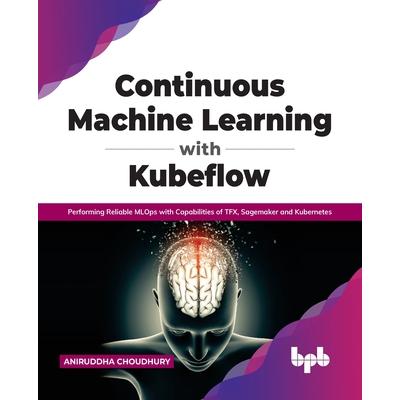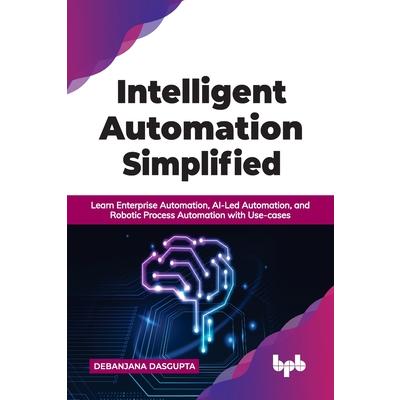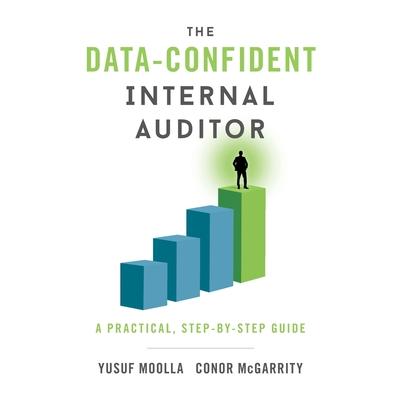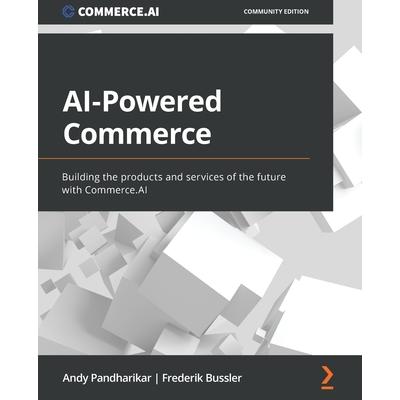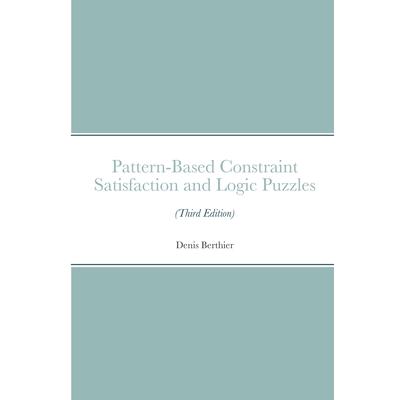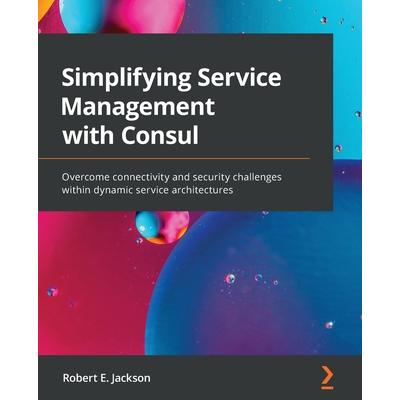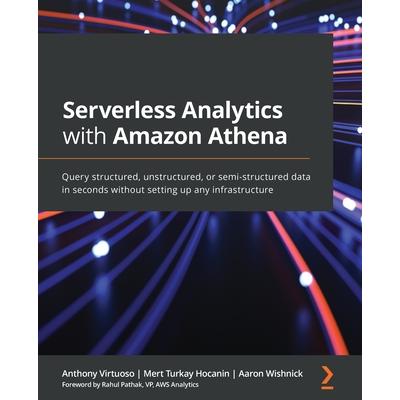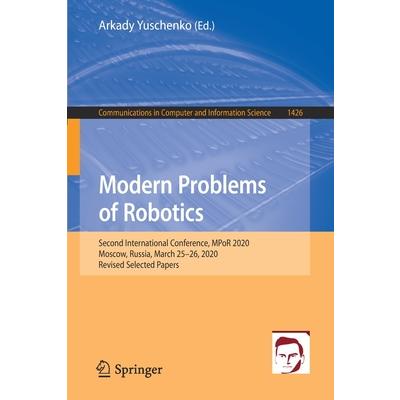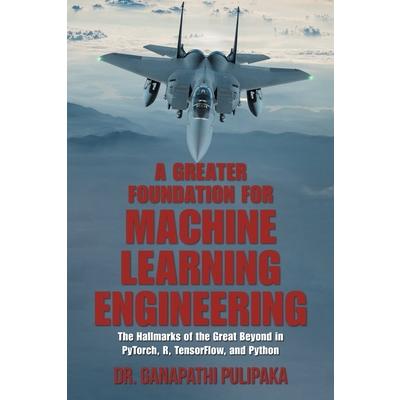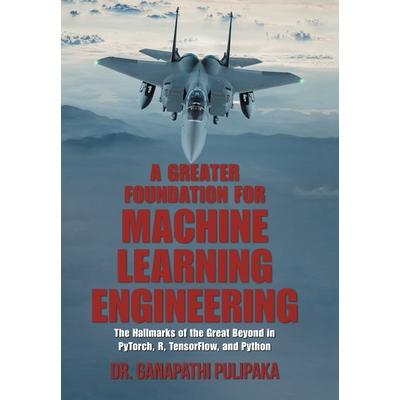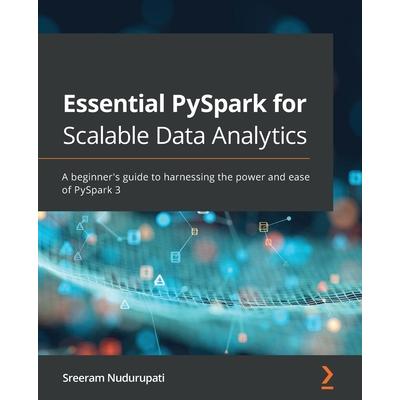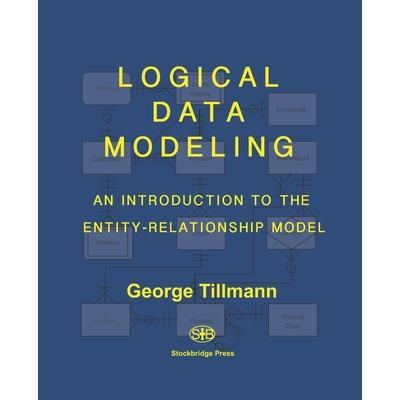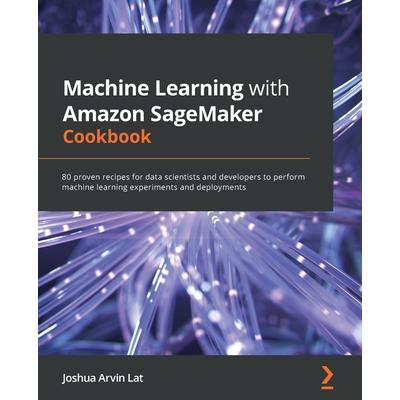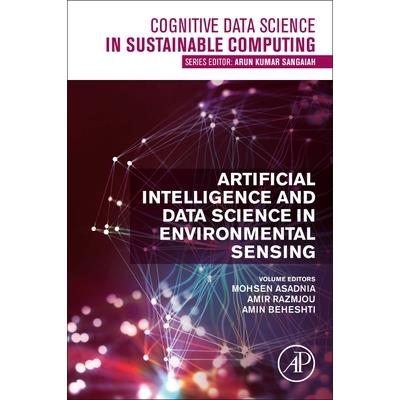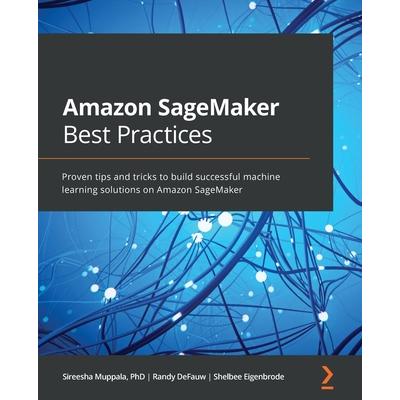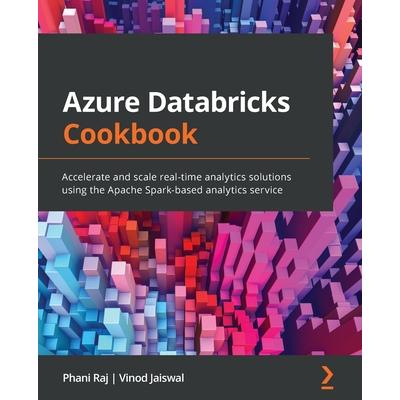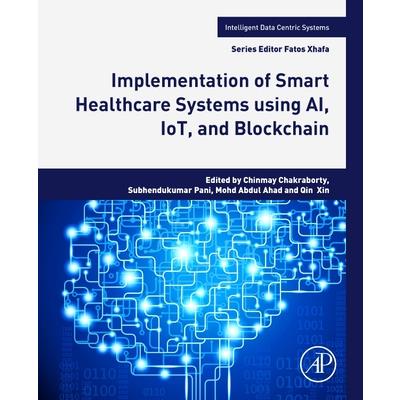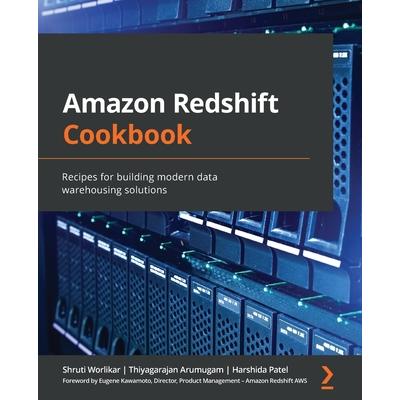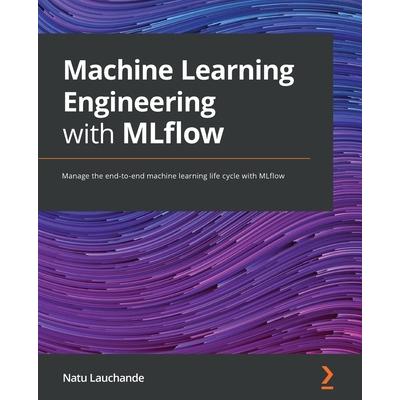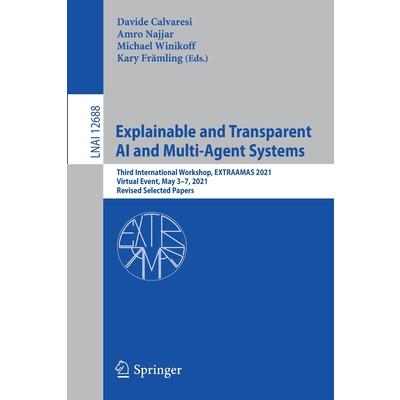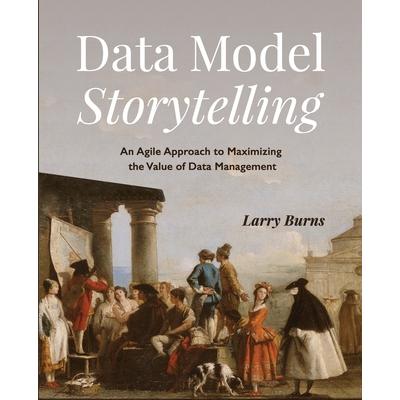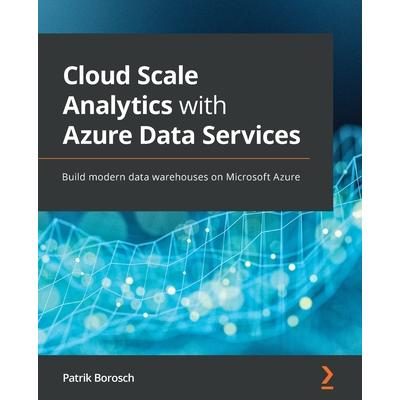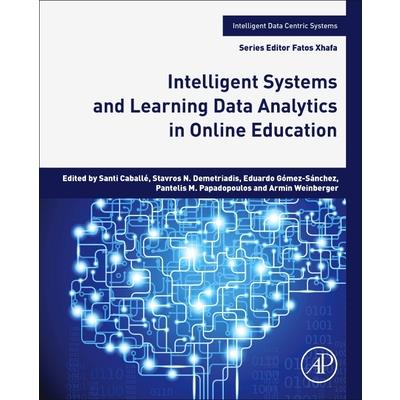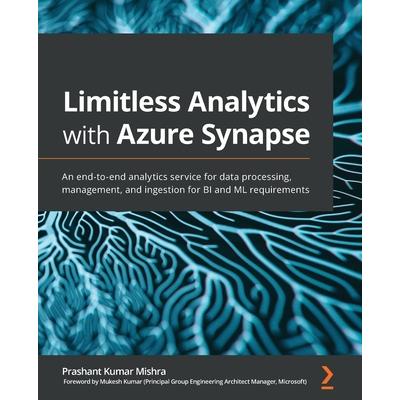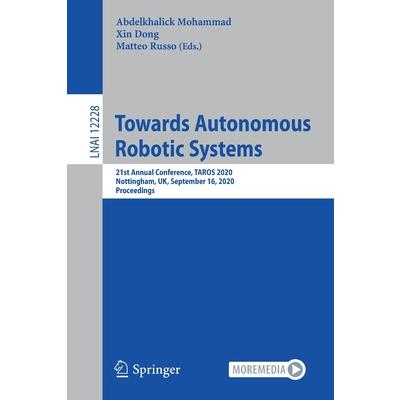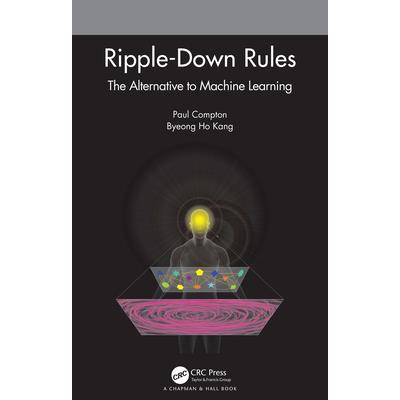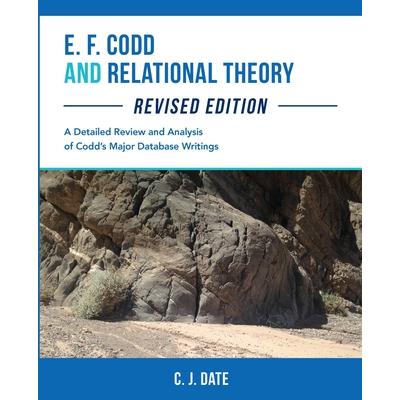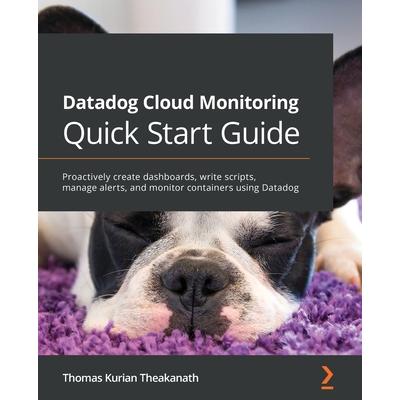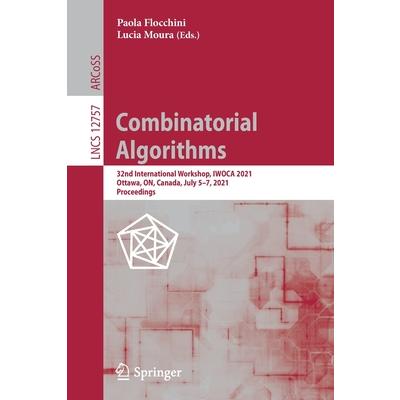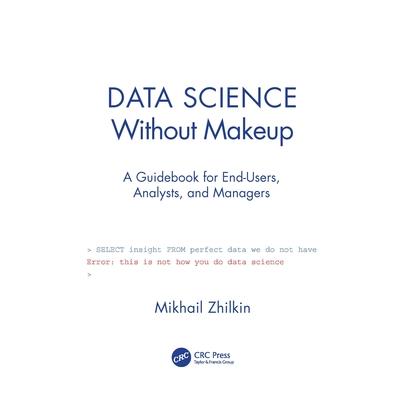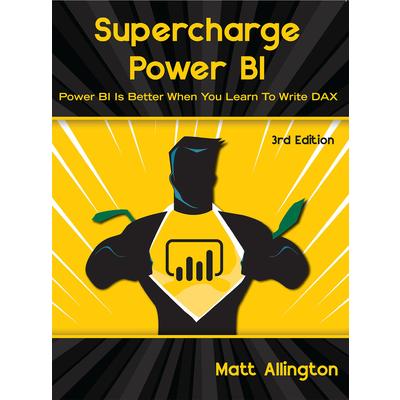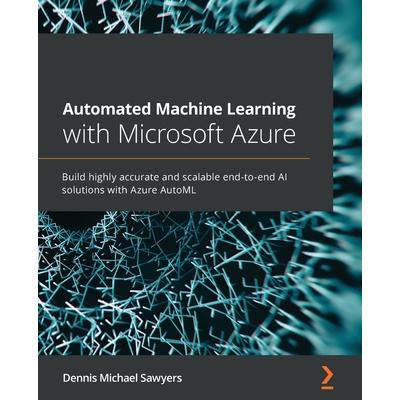Continuous Machine Learning with Kubeflow
An insightful journey to MLOps, DevOps, and Machine Learning in the real environment.Key FeaturesExtensive knowledge and concept explanation of Kubernetes components with examples.An all-in-one knowledge guide to train and deploy ML pipelines using Docker and Kubernetes.Includes numerous MLOps projects with access to proven frameworks and the use of deep learning concepts.Description'Continuous Machine Learning with Kubeflow' introduces you to the modern machine learning infrastructure, which includes Kubernetes and the Kubeflow architecture. This book will explain the fundamentals of deploying various AI/ML use cases with TensorFlow training and serving with Kubernetes and how Kubernetes can help with specific projects from start to finish.This book will help demonstrate how to use Kubeflow components, deploy them in GCP, and serve them in production using real-time data prediction. With Kubeflow KFserving, we'll look at serving techniques, build a computer vision-based user interface in streamlit, and then deploy it to the Google cloud platforms, Kubernetes and Heroku. Next, we also explore how to build Explainable AI for determining fairness and biasness with a What-if tool. Backed with various use-cases, we will learn how to put machine learning into production, including training and serving. After reading this book, you will be able to build your ML projects in the cloud using Kubeflow and the latest technology. In addition, you will gain a solid knowledge of DevOps and MLOps, which will open doors to various job roles in companies.What you will learnGet comfortable with the architecture and the orchestration of Kubernetes.Learn to containerize and deploy from scratch using Docker and Google Cloud Platform.Practice how to develop the Kubeflow Orchestrator pipeline for a TensorFlow model.Create AWS SageMaker pipelines, right from training to deployment in production.Build the TensorFlow Extended (TFX) pipeline for an NLP application using Tensorboard and TFMA.Who this book is forThis book is for MLOps, DevOps, Machine Learning Engineers, and Data Scientists who want to continuously deploy machine learning pipelines and manage them at scale using Kubernetes. The readers should have a strong background in machine learning and some knowledge of Kubernetes is required.Table of Contents1. Introduction to Kubeflow & Kubernetes Cloud Architecture2. Developing Kubeflow Pipeline in GCP3. Designing Computer Vision Model in Kubeflow4. Building TFX Pipeline5. ML Model Explainability & Interpretability 6. Building Weights & Biases Pipeline Development7. Applied ML with AWS Sagemaker8. Web App Development with Streamlit & HerokuRead more
Intelligent Automation Simplified
A guide to understand the potential of Intelligent Automation across businesses and enterprises.Key FeaturesA comprehensive discussion of key concepts, techniques, and key elements of intelligent automation.Expert coverage on combining various technologies, including RPA, AI, Blockchain, and IoT.Includes case studies and use cases for successful automation applications.Precise guidance on how to scale automation in enterprises.Description'Intelligent Automation Simplified' guides tech professionals to take a much more simplified and sophisticated step towards developing intelligent automation. This book will explain the basic concepts of smart automation and how to put it into practice for a company.This book explores each stage of automation design and explains how these automation fragments can be brought together in the end-to-end automation of workflow. This book discusses numerous examples and scenarios that will help relate and understand how technology can be used in real life to solve business problems. This book provides a lot of information and insights and helps readers grasp the methodology used to develop an automation solution correctly. With detailed illustrations and real use-cases, you will be able to easily create smart automation solutions and practice how to modify them.Towards the end, the book describes how smart automation expands in a company and discusses the various strategies for large-scale use. The book also highlights the latest trends in intelligent automation and its progress into the future of work.What you will learnLearn about the essential and primary components of intelligent automation.Investigate the capabilities of RPA and AI in the development of Intelligent Automation solutions.Recognize the factors that will help you choose the best processes for automation.Learn how to use the framework to create an Intelligent Automation solution.Create a blueprint to scale automation in the enterprise.Discover the most recent Intelligent Automation trends from industry experts.Who this book is forThis book is intended for current and future technical professionals who want to learn about Intelligent Automation, plan, and implement it in an enterprise or consult with clients. Readers should be familiar with the software development workflow and have a basic understanding of advanced technologies such as AI and RPA.Table of Contents1. Introduction to Intelligent Automation2. Robotic Process Automation3. Artificial Intelligence in Automation4. Other technologies in Automation5. Intelligent Automation Use cases6. Enterprise Automation Journey7. Intelligent Automation Trends and the futureRead more
The Future You
"AI is all around us. Self-driving cars. Smart personal assistants-think Siri, Cortana, or Google Now-or Alexa, Amazon's cloud-based voice service that is available on literally hundreds of millions of devices. Voice-to-text. Manufacturing robots. Facial recognition software. Security surveillance. Automated financial investing and social media monitoring. Smart homes that control themselves when their owners are out of town. The list is endless."All of the above make life easier for us. But in this new book by Moneyball Medicine author/podcaster Harry Glorikian, the spotlight is on how AI can (and will, and in many cases already does) make us healthier."-from the Foreword to The Future You by Dr. Bob ArnotDo you have a smartphone and a wearable device, such as an Apple Watch or a Fitbit? Most likely yes, right? Well, then, as Glorikian tells us, there are already numerous apps available for download that " ... can also continuously monitor temperature, calorie intake, blood glucose, menstruation cycle, respiration rate, stress levels, brain waves, or just about any other aspect of physical and mental health you want." They identify areas where improvement is needed, and tell us how to improve our health in those areas.
The Data-Confident Internal Auditor
For internal auditors, developing trends in data analysis and data science can feel less like a wealth of information and more like an avalanche. Still, better use of data provides an opportunity to advance your career by adopting new, invaluable skills. The missing link? Jargon-free guidance that cuts through the hype. The Data-Confident Internal Auditor demystifies the use of data in internal audits through practical, step-by-step guidance. With concepts and tools that are easy to understand and apply, this comprehensive guide shows you how to approach data yourself, without having to wait on data scientists or technical experts. Developed over the course of hundreds of actual audits, these real-world approaches and practices are distilled into a simple sequence of steps that will leave you feeling confident and even eager to apply them for yourself. Pick up The Data-Confident Internal Auditor and start building your data skills today.
AI-Powered Commerce
Learn how to use artificial intelligence for product and service innovation, including the diverse use cases of Commerce.AIKey Features: Learn how to integrate data and AI in your innovation workflowsUnlock insights into how various industries are using AI for innovationApply your knowledge to real innovation use cases like product strategy and market intelligence Book Description: Commerce.AI is a suite of artificial intelligence (AI) tools, trained on over a trillion data points, to help businesses build next-gen products and services. If you want to be the best business on the block, using AI is a must.Developers and analysts working with AI will be able to put their knowledge to work with this practical guide. You'll begin by learning the core themes of new product and service innovation, including how to identify market opportunities, come up with ideas, and predict trends. With plenty of use cases as reference, you'll learn how to apply AI for innovation, both programmatically and with Commerce.AI. You'll also find out how to analyze product and service data with tools such as GPT-J, Python pandas, Prophet, and TextBlob. As you progress, you'll explore the evolution of commerce in AI, including how top businesses today are using AI. You'll learn how Commerce.AI merges machine learning, product expertise, and big data to help businesses make more accurate decisions. Finally, you'll use the Commerce.AI suite for product ideation and analyzing market trends.By the end of this artificial intelligence book, you'll be able to strategize new product opportunities by using AI, and also have an understanding of how to use Commerce.AI for product ideation, trend analysis, and predictions.What You Will Learn: Find out how machine learning can help you identify new market opportunitiesUnderstand how to use consumer data to create new products and servicesUse state-of-the-art AI frameworks and tools for data analysisLaunch, track, and improve products and services with AIRise above the competition with unparalleled insights from AITurn customer touchpoints into business winsGenerate high-conversion product and service copyWho this book is for: This AI book is for AI developers, data scientists, data product managers, analysts, and consumer insights professionals. The book will guide you through the process of product and service innovation, no matter your pre-existing skillset.
Pattern-Based Constraint Satisfaction and Logic Puzzles (Third Edition)
"Pattern-Based Constraint Satisfaction and Logic Puzzles (Third Edition)" develops a pure logic, pattern-based perspective of solving the finite Constraint Satisfaction Problem (CSP), with emphasis on finding the "simplest" solution. Different ways of reasoning with the constraints are formalised by various families of "resolution rules", each of them carrying its own notion of simplicity. A large part of the book illustrates the power of the approach by applying it to various popular logic puzzles. It provides a unified view of how to model and solve them, even though they involve very different types of constraints: obvious symmetric ones in Sudoku, non-symmetric but transitive ones in Futoshiki, topological and geometric ones in Map colouring, Numbrix and Hidato, non-binary arithmetic ones in Kakuro and both non-binary and non-local ones in Slitherlink. It also shows that the most familiar techniques for these puzzles can be understood as mere application-specific presentations of the general rules. A free companion software (CSP-Rules-V2.1) implementing all the rules and above-mentioned applications is available on GitHub under the GPL license.
Strategic Monoliths and Microservices
Make Software Architecture Choices That Maximize Value and Innovation "[Vernon and Jaskula] provide insights, tools, proven best practices, and architecture styles both from the business and engineering viewpoint. . . . This book deserves to become a must-read for practicing software engineers, executives as well as senior managers." --Michael Stal, Certified Senior Software Architect, Siemens Technology Strategic Monoliths and Microservices helps business decision-makers and technical team members clearly understand their strategic problems through collaboration and identify optimal architectural approaches, whether the approach is distributed microservices, well-modularized monoliths, or coarser-grained services partway between the two. Leading software architecture experts Vaughn Vernon and Tomasz Jaskula show how to make balanced architectural decisions based on need and purpose, rather than hype, so you can promote value and innovation, deliver more evolvable systems, and avoid costly mistakes. Using realistic examples, they show how to construct well-designed monoliths that are maintainable and extensible, and how to gradually redesign and reimplement even the most tangled legacy systems into truly effective microservices. Link software architecture planning to business innovation and digital transformation Overcome communication problems to promote experimentation and discovery-based innovation Master practices that support your value-generating goals and help you invest more strategically Compare architectural styles that can lead to versatile, adaptable applications and services Recognize when monoliths are your best option and how best to architect, design, and implement them Learn when to move monoliths to microservices and how to do it, whether they're modularized or a "Big Ball of Mud" Register your book for convenient access to downloads, updates, and/or corrections as they become available. See inside book for details.
Machine Learning for Time-Series with Python
Become proficient in deriving insights from time-series data and analyzing a model's performanceKey Features: Explore popular and modern machine learning methods including the latest online and deep learning algorithmsLearn to increase the accuracy of your predictions by matching the right model with the right problemMaster time-series via real-world case studies on operations management, digital marketing, finance, and healthcareBook Description: Machine learning has emerged as a powerful tool to understand hidden complexities in time-series datasets, which frequently need to be analyzed in areas as diverse as healthcare, economics, digital marketing, and social sciences. These datasets are essential for forecasting and predicting outcomes or for detecting anomalies to support informed decision making.This book covers Python basics for time-series and builds your understanding of traditional autoregressive models as well as modern non-parametric models. You will become confident with loading time-series datasets from any source, deep learning models like recurrent neural networks and causal convolutional network models, and gradient boosting with feature engineering.Machine Learning for Time-Series with Python explains the theory behind several useful models and guides you in matching the right model to the right problem. The book also includes real-world case studies covering weather, traffic, biking, and stock market data.By the end of this book, you will be proficient in effectively analyzing time-series datasets with machine learning principles.What You Will Learn: Understand the main classes of time-series and learn how to detect outliers and patternsChoose the right method to solve time-series problemsCharacterize seasonal and correlation patterns through autocorrelation and statistical techniquesGet to grips with time-series data visualizationUnderstand classical time-series models like ARMA and ARIMAImplement deep learning models like Gaussian processes and transformers and state-of-the-art machine learning modelsBecome familiar with many libraries like prophet, xgboost, and TensorFlowWho this book is for: This book is ideal for data analysts, data scientists, and Python developers who are looking to perform time-series analysis to effectively predict outcomes. Basic knowledge of the Python language is essential. Familiarity with statistics is desirable.
Semi-Custom IC Design and VLSI
The contents of this book were first presented as a series of lectures at the first IEE Vacation School on Semi-Custom IC Design and VLSI held at the University of Edinburgh on 4-8 July 1983. The earlier chapters provide an introduction to silicon IC technology and include descriptions of the various processing techniques employed in the manufacture of microelectronic components. Different types of semi-custom IC are then reviewed and the factors that have to be considered in choosing a semi-custom technique are examined in detail. Logic design is next presented as an activity that is best carried out at a higher level of abstraction than the customary/logic gate level by using the algorithmic state machine (ASM) method. In the sections that follow, computer aids to design and design automation tools are introduced as essential requirements for the rapid and error-free design of semicustom ICs. Testing strategies and the need to design for testability are also covered in some detail. Although a heavy emphasis is placed on the design of semi-custom ICs, consideration is also given to the ways in which custom VLSI circuits will be designed in future. The merits of the programmable logic array (PLA) as a VLSI building-block are put forward, and the silicon compiler is presented as possibly the ultimate 'semi-custom' technique. The authors who have contributed to this volume are specialists in their field who can claim many years of experience either in the microelectronics industry or in universities throughout the UK.
Aprendizaje Autom獺tico en Acci籀n
聶Est獺 buscando un libro fundamental para comenzar con los conceptos b獺sicos del aprendizaje autom獺tico? Mi libro le explicar獺 los conceptos b獺sicos de manera que sean f獺ciles de entender. Una vez que haya le穩do este libro, tendr獺 una s籀lida comprensi籀n de los principios b獺sicos que facilitar獺n el paso a un libro m獺s avanzado si desea obtener m獺s informaci籀n.
Simplifying Service Management with Consul
Understand the basics of the Consul server and client architecture, and learn how to apply Consul for dynamic and secure service discovery, communication, and network connectivity automationKey Features: Discover how Consul servers and clients operate to facilitate primary Consul use casesLearn how Consul dynamically and securely discovers and shares service data throughout the networkUtilize Consul to extend and secure network communications across multiple operating environments Book Description: Within the elastic and dynamic nature of cloud computing, efficient and accurate service discovery provides the cornerstone for all communications. HashiCorp Consul facilitates this service discovery efficiently and securely, independent of the operating environment. This book will help you build a solid understanding of both the concepts and applications of HashiCorp Consul.You'll begin by finding out what you can do with Consul, focusing on the conceptual views of configuration samples along with Terraform code to expedite lab environment and hands-on experimentation, which will enable you to apply Consul effectively in your everyday lives. As you advance, you'll learn how to set up your own Consul cluster and agents in a single datacenter or location and understand how Consul utilizes RAFT and GOSSIP protocols for communication. You'll also explore the practical applications of primary Consul use cases, including communication flows and configuration and code examples. With that knowledge, you'll extend Consul across datacenters to discuss the applicability of multiple regions, multiple clouds, and hybrid cloud environments.By the end of this Consul book, you will have the tools needed to create and operate your own Consul cluster and be able to facilitate your service discovery and communication.What You Will Learn: Deploy and configure a highly available multi-node Consul architectureImplement Consul service discovery across multiple servicesUtilize Consul to monitor and communicate service health statusConnect services securely across a range of environmentsLeverage your knowledge of the Consul service to automate network infrastructureExtend your Consul knowledge and connectivity across multiple environmentsWho this book is for: If you are a solutions architect, DevOps engineer, or anyone new to the cloud-native framework looking to get started with using Consul, then this book is for you. Knowledge of Terraform is helpful but not necessary. A basic understanding of networking and Kubernetes systems will help you get the most out of this book.
Serverless Analytics with Amazon Athena
Get more from your data with Amazon Athena's ease-of-use, interactive performance, and pay-per-query pricingKey Features: Explore the promising capabilities of Amazon Athena and Athena's Query Federation SDKUse Athena to prepare data for common machine learning activitiesCover best practices for setting up connectivity between your application and Athena and security considerationsBook Description: Amazon Athena is an interactive query service that makes it easy to analyze data in Amazon S3 using SQL, without needing to manage any infrastructure.This book begins with an overview of the serverless analytics experience offered by Athena and teaches you how to build and tune an S3 Data Lake using Athena, including how to structure your tables using open-source file formats like Parquet. You'll learn how to build, secure, and connect to a data lake with Athena and Lake Formation. Next, you'll cover key tasks such as ad hoc data analysis, working with ETL pipelines, monitoring and alerting KPI breaches using CloudWatch Metrics, running customizable connectors with AWS Lambda, and more. Moving on, you'll work through easy integrations, troubleshooting and tuning common Athena issues, and the most common reasons for query failure. You will also review tips to help diagnose and correct failing queries in your pursuit of operational excellence. Finally, you'll explore advanced concepts such as Athena Query Federation and Athena ML to generate powerful insights without needing to touch a single server.By the end of this book, you'll be able to build and use a data lake with Amazon Athena to add data-driven features to your app and perform the kind of ad hoc data analysis that often precedes many of today's ML modeling exercises.What You Will Learn: Secure and manage the cost of querying your dataUse Athena ML and User Defined Functions (UDFs) to add advanced features to your reportsWrite your own Athena Connector to integrate with a custom data sourceDiscover your datasets on S3 using AWS Glue CrawlersIntegrate Amazon Athena into your applicationsSetup Identity and Access Management (IAM) policies to limit access to tables and databases in Glue Data CatalogAdd an Amazon SageMaker Notebook to your Athena queriesGet to grips with using Athena for ETL pipelinesWho this book is for: Business intelligence (BI) analysts, application developers, and system administrators who are looking to generate insights from an ever-growing sea of data while controlling costs and limiting operational burden, will find this book helpful. Basic SQL knowledge is expected to make the most out of this book.
Modern Problems of Robotics
This book constitutes the post-conference proceedings of the 2nd International Conference on Modern Problems of Robotics, MPoR 2020, held in Moscow, Russia, in March 2020.The 16 revised full papers were carefully reviewed and selected from 21 submissions. The volume includes the following topical sections: Collaborative Robotic Systems, Robotic Systems Design and Simulation, and Robots Control. The papers are devoted to the most interesting today's investigations in Robotics, such as the problems of the human-robot interaction, the problems of robot design and simulation, and the problems of robot and robotic complexes control.
A Greater Foundation for Machine Learning Engineering
This research scholarly illustrated book has more than 250 illustrations. The simple models of supervised machine learning with Gaussian Na簿ve Bayes, Na簿ve Bayes, decision trees, classification rule learners, linear regression, logistic regression, local polynomial regression, regression trees, model trees, K-nearest neighbors, and support vector machines lay a more excellent foundation for statistics. The author of the book Dr. Ganapathi Pulipaka, a top influencer of machine learning in the US, has created this as a reference book for universities. This book contains an incredible foundation for machine learning and engineering beyond a compact manual. The author goes to extraordinary lengths to make academic machine learning and deep learning literature comprehensible to create a new body of knowledge. The book aims at readership from university students, enterprises, data science beginners, machine learning and deep learning engineers at scale for high-performance computing environments. A Greater Foundation of Machine Learning Engineering covers a broad range of classical linear algebra and calculus with program implementations in PyTorch, TensorFlow, R, and Python with in-depth coverage. The author does not hesitate to go into math equations for each algorithm at length that usually many foundational machine learning books lack leveraging the JupyterLab environment. Newcomers can leverage the book from University or people from all walks of data science or software lives to the advanced practitioners of machine learning and deep learning. Though the book title suggests machine learning, there are several implementations of deep learning algorithms, including deep reinforcement learning. The book's mission is to help build a strong foundation for machine learning and deep learning engineers with all the algorithms, processors to train and deploy into production for enterprise-wide machine learning implementations. This book also introduces all the concepts of natural language processing required for machine learning algorithms in Python. The book covers Bayesian statistics without assuming high-level mathematics or statistics experience from the readers. It delivers the core concepts and implementations required with R code with open datasets. The book also covers unsupervised machine learning algorithms with association rules and k-means clustering, metal-learning algorithms, bagging, boosting, random forests, and ensemble methods. The book delves into the origins of deep learning in a scholarly way covering neural networks, restricted Boltzmann machines, deep belief networks, autoencoders, deep Boltzmann machines, LSTM, and natural language processing techniques with deep learning algorithms and math equations. It leverages the NLTK library of Python with PyTorch, Python, and TensorFlow's installation steps, then demonstrates how to build neural networks with TensorFlow. Deploying machine learning algorithms require a blend of cloud computing platforms, SQL databases, and NoSQL databases. Any data scientist with a statistics background that looks to transition into a machine learning engineer role requires an in-depth understanding of machine learning project implementations on Amazon, Google, or Microsoft Azure cloud computing platforms. The book provides real-world client projects for understanding the complete implementation of machine learning algorithms. This book is a marvel that does not leave any application of machine learning and deep learning algorithms. It sets a more excellent foundation for newcomers and expands the horizons for experienced deep learning practitioners. It is almost inevitable that there will be a series of more advanced algorithms follow-up books from the author in some shape or form after setting such a perfect foundation for machine learning engineering.
A Greater Foundation for Machine Learning Engineering
This research scholarly illustrated book has more than 250 illustrations. The simple models of supervised machine learning with Gaussian Na簿ve Bayes, Na簿ve Bayes, decision trees, classification rule learners, linear regression, logistic regression, local polynomial regression, regression trees, model trees, K-nearest neighbors, and support vector machines lay a more excellent foundation for statistics. The author of the book Dr. Ganapathi Pulipaka, a top influencer of machine learning in the US, has created this as a reference book for universities. This book contains an incredible foundation for machine learning and engineering beyond a compact manual. The author goes to extraordinary lengths to make academic machine learning and deep learning literature comprehensible to create a new body of knowledge. The book aims at readership from university students, enterprises, data science beginners, machine learning and deep learning engineers at scale for high-performance computing environments. A Greater Foundation of Machine Learning Engineering covers a broad range of classical linear algebra and calculus with program implementations in PyTorch, TensorFlow, R, and Python with in-depth coverage. The author does not hesitate to go into math equations for each algorithm at length that usually many foundational machine learning books lack leveraging the JupyterLab environment. Newcomers can leverage the book from University or people from all walks of data science or software lives to the advanced practitioners of machine learning and deep learning. Though the book title suggests machine learning, there are several implementations of deep learning algorithms, including deep reinforcement learning. The book's mission is to help build a strong foundation for machine learning and deep learning engineers with all the algorithms, processors to train and deploy into production for enterprise-wide machine learning implementations. This book also introduces all the concepts of natural language processing required for machine learning algorithms in Python. The book covers Bayesian statistics without assuming high-level mathematics or statistics experience from the readers. It delivers the core concepts and implementations required with R code with open datasets. The book also covers unsupervised machine learning algorithms with association rules and k-means clustering, metal-learning algorithms, bagging, boosting, random forests, and ensemble methods. The book delves into the origins of deep learning in a scholarly way covering neural networks, restricted Boltzmann machines, deep belief networks, autoencoders, deep Boltzmann machines, LSTM, and natural language processing techniques with deep learning algorithms and math equations. It leverages the NLTK library of Python with PyTorch, Python, and TensorFlow's installation steps, then demonstrates how to build neural networks with TensorFlow. Deploying machine learning algorithms require a blend of cloud computing platforms, SQL databases, and NoSQL databases. Any data scientist with a statistics background that looks to transition into a machine learning engineer role requires an in-depth understanding of machine learning project implementations on Amazon, Google, or Microsoft Azure cloud computing platforms. The book provides real-world client projects for understanding the complete implementation of machine learning algorithms. This book is a marvel that does not leave any application of machine learning and deep learning algorithms. It sets a more excellent foundation for newcomers and expands the horizons for experienced deep learning practitioners. It is almost inevitable that there will be a series of more advanced algorithms follow-up books from the author in some shape or form after setting such a perfect foundation for machine learning engineering.
Essential PySpark for Scalable Data Analytics
Get started with distributed computing using PySpark, a single unified framework to solve end-to-end data analytics at scaleKey Features: Discover how to convert huge amounts of raw data into meaningful and actionable insightsUse Spark's unified analytics engine for end-to-end analytics, from data preparation to predictive analyticsPerform data ingestion, cleansing, and integration for ML, data analytics, and data visualizationBook Description: Apache Spark is a unified data analytics engine designed to process huge volumes of data quickly and efficiently. PySpark is Apache Spark's Python language API, which offers Python developers an easy-to-use scalable data analytics framework.Essential PySpark for Scalable Data Analytics starts by exploring the distributed computing paradigm and provides a high-level overview of Apache Spark. You'll begin your analytics journey with the data engineering process, learning how to perform data ingestion, cleansing, and integration at scale. This book helps you build real-time analytics pipelines that enable you to gain insights much faster. You'll then discover methods for building cloud-based data lakes, and explore Delta Lake, which brings reliability and performance to data lakes. The book also covers Data Lakehouse, an emerging paradigm, which combines the structure and performance of a data warehouse with the scalability of cloud-based data lakes. Later, you'll perform scalable data science and machine learning tasks using PySpark, such as data preparation, feature engineering, and model training and productionization. Finally, you'll learn ways to scale out standard Python ML libraries along with a new pandas API on top of PySpark called Koalas.By the end of this PySpark book, you'll be able to harness the power of PySpark to solve business problems.What You Will Learn: Understand the role of distributed computing in the world of big dataGain an appreciation for Apache Spark as the de facto go-to for big data processingScale out your data analytics process using Apache SparkBuild data pipelines using data lakes, and perform data visualization with PySpark and Spark SQLLeverage the cloud to build truly scalable and real-time data analytics applicationsExplore the applications of data science and scalable machine learning with PySparkIntegrate your clean and curated data with BI and SQL analysis toolsWho this book is for: This book is for practicing data engineers, data scientists, data analysts, and data enthusiasts who are already using data analytics to explore distributed and scalable data analytics. Basic to intermediate knowledge of the disciplines of data engineering, data science, and SQL analytics is expected. General proficiency in using any programming language, especially Python, and working knowledge of performing data analytics using frameworks such as pandas and SQL will help you to get the most out of this book.
Logical Data Modeling
Introduces the fundamentals of the Entity-Relationship Model, lays out a common set of principles to follow when modeling, gives detailed guidance on building a logical data model for real-world systems development projects, and follows a best practices approach-presents the lessons learned from dozens of experienced data modelers over decades of data modeling.In addition, this book is useful for the experienced data modeler who wants to expand his or her knowledge of the E-R Model or learn some tips and tricks of the trade.
Machine Learning with Amazon SageMaker Cookbook
A step-by-step solution-based guide to preparing building, training, and deploying high-quality machine learning models with Amazon SageMakerKey Features: Perform ML experiments with built-in and custom algorithms in SageMakerExplore proven solutions when working with TensorFlow, PyTorch, Hugging Face Transformers, and scikit-learnUse the different features and capabilities of SageMaker to automate relevant ML processesBook Description: Amazon SageMaker is a fully managed machine learning (ML) service that helps data scientists and ML practitioners manage ML experiments. In this book, you'll use the different capabilities and features of Amazon SageMaker to solve relevant data science and ML problems.This step-by-step guide features 80 proven recipes designed to give you the hands-on machine learning experience needed to contribute to real-world experiments and projects. You'll cover the algorithms and techniques that are commonly used when training and deploying NLP, time series forecasting, and computer vision models to solve ML problems. You'll explore various solutions for working with deep learning libraries and frameworks such as TensorFlow, PyTorch, and Hugging Face Transformers in Amazon SageMaker. You'll also learn how to use SageMaker Clarify, SageMaker Model Monitor, SageMaker Debugger, and SageMaker Experiments to debug, manage, and monitor multiple ML experiments and deployments. Moreover, you'll have a better understanding of how SageMaker Feature Store, Autopilot, and Pipelines can meet the specific needs of data science teams.By the end of this book, you'll be able to combine the different solutions you've learned as building blocks to solve real-world ML problems.What You Will Learn: Train and deploy NLP, time series forecasting, and computer vision models to solve different business problemsPush the limits of customization in SageMaker using custom container imagesUse AutoML capabilities with SageMaker Autopilot to create high-quality modelsWork with effective data analysis and preparation techniquesExplore solutions for debugging and managing ML experiments and deploymentsDeal with bias detection and ML explainability requirements using SageMaker ClarifyAutomate intermediate and complex deployments and workflows using a variety of solutionsWho this book is for: This book is for developers, data scientists, and machine learning practitioners interested in using Amazon SageMaker to build, analyze, and deploy machine learning models with 80 step-by-step recipes. All you need is an AWS account to get things running. Prior knowledge of AWS, machine learning, and the Python programming language will help you to grasp the concepts covered in this book more effectively.
Artificial Intelligence and Data Science in Environmental Sensing
Artificial Intelligence and Data Science in Environmental Sensing provides state-of-the-art information on the inexpensive mass-produced sensors that are used as inputs to artificial intelligence systems. The book discusses the advances of AI and Machine Learning technologies in material design for environmental areas. It is an excellent resource for researchers and professionals who work in the field of data processing, artificial intelligence sensors and environmental applications.
Building Data-Driven Applications with Danfo.js
Get hands-on with building data-driven applications using Danfo.js in combination with other data analysis tools and techniques Key Features: Build microservices to perform data transformation and ML model serving in JavaScriptExplore what Danfo.js is and how it helps with data analysis and data visualizationCombine Danfo.js and TensorFlow.js for machine learningBook Description: Most data analysts use Python and pandas for data processing for the convenience and performance these libraries provide. However, JavaScript developers have always wanted to use machine learning in the browser as well. This book focuses on how Danfo.js brings data processing, analysis, and ML tools to JavaScript developers and how to make the most of this library to build data-driven applications.Starting with an overview of modern JavaScript, you'll cover data analysis and transformation with Danfo.js and Dnotebook. The book then shows you how to load different datasets, combine and analyze them by performing operations such as handling missing values and string manipulations. You'll also get to grips with data plotting, visualization, aggregation, and group operations by combining Danfo.js with Plotly. As you advance, you'll create a no-code data analysis and handling system and create-react-app, react-table, react-chart, Draggable.js, and tailwindcss, and understand how to use TensorFlow.js and Danfo.js to build a recommendation system. Finally, you'll build a Twitter analytics dashboard powered by Danfo.js, Next.js, node-nlp, and Twit.js.By the end of this app development book, you'll be able to build and embed data analytics, visualization, and ML capabilities into any JavaScript app in server-side Node.js or the browser.What You Will Learn: Perform data experimentation and analysis with Danfo.js and DnotebookBuild machine learning applications using Danfo.js integrated with TensorFlow.jsConnect Danfo.js with popular database applications to aid data analysisCreate a no-code data analysis and handling system using internal librariesDevelop a recommendation system with Danfo.js and TensorFlow.jsBuild a Twitter analytics dashboard for sentiment analysis and other types of data insightsWho this book is for: This book is for data analysts, data scientists, and JavaScript developers who want to create data-driven applications in the JavaScript/Node.js environment. Intermediate-level knowledge of JavaScript programming and data science using pandas is expected.
Amazon SageMaker Best Practices
Overcome advanced challenges in building end-to-end ML solutions by leveraging the capabilities of Amazon SageMaker for developing and integrating ML models into productionKey Features: Learn best practices for all phases of building machine learning solutions - from data preparation to monitoring models in productionAutomate end-to-end machine learning workflows with Amazon SageMaker and related AWSDesign, architect, and operate machine learning workloads in the AWS CloudBook Description: Amazon SageMaker is a fully managed AWS service that provides the ability to build, train, deploy, and monitor machine learning models. The book begins with a high-level overview of Amazon SageMaker capabilities that map to the various phases of the machine learning process to help set the right foundation. You'll learn efficient tactics to address data science challenges such as processing data at scale, data preparation, connecting to big data pipelines, identifying data bias, running A/B tests, and model explainability using Amazon SageMaker. As you advance, you'll understand how you can tackle the challenge of training at scale, including how to use large data sets while saving costs, monitoring training resources to identify bottlenecks, speeding up long training jobs, and tracking multiple models trained for a common goal. Moving ahead, you'll find out how you can integrate Amazon SageMaker with other AWS to build reliable, cost-optimized, and automated machine learning applications. In addition to this, you'll build ML pipelines integrated with MLOps principles and apply best practices to build secure and performant solutions.By the end of the book, you'll confidently be able to apply Amazon SageMaker's wide range of capabilities to the full spectrum of machine learning workflows.What You Will Learn: Perform data bias detection with AWS Data Wrangler and SageMaker ClarifySpeed up data processing with SageMaker Feature StoreOvercome labeling bias with SageMaker Ground TruthImprove training time with the monitoring and profiling capabilities of SageMaker DebuggerAddress the challenge of model deployment automation with CI/CD using the SageMaker model registryExplore SageMaker Neo for model optimizationImplement data and model quality monitoring with Amazon Model MonitorImprove training time and reduce costs with SageMaker data and model parallelismWho this book is for: This book is for expert data scientists responsible for building machine learning applications using Amazon SageMaker. Working knowledge of Amazon SageMaker, machine learning, deep learning, and experience using Jupyter Notebooks and Python is expected. Basic knowledge of AWS related to data, security, and monitoring will help you make the most of the book.
Azure Databricks Cookbook
Get to grips with building and productionizing end-to-end big data solutions in Azure and learn best practices for working with large datasetsKey Features: Integrate with Azure Synapse Analytics, Cosmos DB, and Azure HDInsight Kafka Cluster to scale and analyze your projects and build pipelinesUse Databricks SQL to run ad hoc queries on your data lake and create dashboardsProductionize a solution using CI/CD for deploying notebooks and Azure Databricks Service to various environmentsBook Description: Azure Databricks is a unified collaborative platform for performing scalable analytics in an interactive environment. The Azure Databricks Cookbook provides recipes to get hands-on with the analytics process, including ingesting data from various batch and streaming sources and building a modern data warehouse.The book starts by teaching you how to create an Azure Databricks instance within the Azure portal, Azure CLI, and ARM templates. You'll work through clusters in Databricks and explore recipes for ingesting data from sources, including files, databases, and streaming sources such as Apache Kafka and EventHub. The book will help you explore all the features supported by Azure Databricks for building powerful end-to-end data pipelines. You'll also find out how to build a modern data warehouse by using Delta tables and Azure Synapse Analytics. Later, you'll learn how to write ad hoc queries and extract meaningful insights from the data lake by creating visualizations and dashboards with Databricks SQL. Finally, you'll deploy and productionize a data pipeline as well as deploy notebooks and Azure Databricks service using continuous integration and continuous delivery (CI/CD).By the end of this Azure book, you'll be able to use Azure Databricks to streamline different processes involved in building data-driven apps.What You Will Learn: Read and write data from and to various Azure resources and file formatsBuild a modern data warehouse with Delta Tables and Azure Synapse AnalyticsExplore jobs, stages, and tasks and see how Spark lazy evaluation worksHandle concurrent transactions and learn performance optimization in Delta tablesLearn Databricks SQL and create real-time dashboards in Databricks SQLIntegrate Azure DevOps for version control, deploying, and productionizing solutions with CI/CD pipelinesDiscover how to use RBAC and ACLs to restrict data accessBuild end-to-end data processing pipeline for near real-time data analyticsWho this book is for: This recipe-based book is for data scientists, data engineers, big data professionals, and machine learning engineers who want to perform data analytics on their applications. Prior experience of working with Apache Spark and Azure is necessary to get the most out of this book.
SGBD relationnels - Tome 1
Le tome 1 de cet ouvrage est consacr矇 ? la pr矇sentation des fondamentaux des SGBD relationnels. Il d矇crit, de fa癟on d矇taill矇e, comment la deuxi癡me g矇n矇ration de la technologie des bases de donn矇es, bas矇e sur le mod癡le relationnel de E.F. CODD, a r矇ussi ? prendre en compte les principales exigences, li矇es aux pr矇occupations des entreprises, pour pouvoir servir de support pour le stockage des donn矇es d'un syst癡me d'information, ? savoir: les exigences li矇es ? l'ind矇pendance des donn矇es, ? leur int矇grit矇, ? leur confidentialit矇, ? la gestion des acc癡s simultan矇s par plusieurs utilisateurs, ? leur s矇curit矇 en cas d'incident, aux performances et ? l'ad矇quation du langage d'interface permettant leur manipulation selon une approche relationnelle.Dans le discours, la pr矇sentation des concepts, des langages, des m矇thodes et des techniques est abondamment illustr矇e par des exemples en s'appuyant notamment sur le SGBD Oracle 12c. Cet ouvrage peut servir de support pour l'enseignement de la technologie des bases de donn矇es aussi bien ? un enseignant pour la pr矇paration de ses cours qu'? un apprenant pour l'approfondissement de son apprentissage.On y trouve: (1) une pr矇sentation des concepts du mod癡le relationnel servant de support ? l'organisation logique des donn矇es, (2) une pr矇sentation des langages abstraits de manipulation de ces donn矇es, d矇riv矇s de ces concepts en prenant appui sur la th矇orie des ensembles et sur la logique du premier ordre, (3) une pr矇sentation des techniques d'ing矇nierie d'une organisation logique des donn矇es, d矇riv矇es 矇galement des concepts du mod癡le relationnel, bas矇es sur la normalisation, ayant la capacit矇 de garantir le respect des contraintes d'int矇grit矇, d矇coulant des r癡gles de gestion relatives aux d矇pendances qui doivent 礙tre maintenues entre les donn矇es 矇l矇mentaires d'un syst癡me d'information.SQL, le langage d'interface normalis矇 des SGBD relationnels y est pr矇sent矇 en mettant en 矇vidence les apports du mod癡le relationnel qui en font d'une part, un puissant langage de d矇finition des donn矇es int矇grant nativement la sp矇cification des contraintes d'int矇grit矇 et de confidentialit矇 et d'autre part, un puissant langage abstrait de manipulation de ces donn矇es selon une approche dite relationnelle. Ceci permet de r矇pondre de fa癟on satisfaisante aux exigences li矇es ? l'int矇grit矇, ? la confidentialit矇 et ? l'ad矇quation de l'interface d'acc癡s pour la manipulation des donn矇es selon une approche relationnelle.Cette pr矇sentation inclut une pr矇sentation d矇taill矇e des extensions apport矇es ? SQL, pour en faire un langage complet de programmation, int矇grant nativement les fonctionnalit矇s pouvant permettre l'ex矇cution des ordres SQL de d矇marcation des transactions et de manipulation d'une base de donn矇es, en 矇vitant tout conflit d'imp矇dance li矇 ? une incompatibilit矇 entre les types de ce langage et les types du SGBD.Cette pr矇sentation inclut aussi une pr矇sentation d矇taill矇e des connecteurs de bases de donn矇es dont le r繫le est de permettre la manipulation d'une base de donn矇es ? l'aide de requ礙tes SQL ? partir d'un programme 矇crit dans un langage de programmation existant.La mani癡re dont les SGBD relationnels proc癡dent pour satisfaire aux exigences relatives ? l'ind矇pendance, aux performances, ? la gestion des acc癡s simultan矇s par plusieurs utilisateurs et ? la s矇curit矇 des donn矇es lors de la survenue d'un incident, y est abord矇e ? travers une pr矇sentation des techniques mises en oeuvre pour (1) l'impl矇mentation physique des donn矇es sur les supports de stockage, (2) la transformation des requ礙tes SQL en code ex矇cutable et (3) la gestion de la concurrence et des incidents.
Implementation of Smart Healthcare Systems Using Ai, Iot, and Blockchain
Implementation of Smart Healthcare Systems using AI, IoT, and Blockchain provides imperative research on the development of data fusion and analytics for healthcare and their implementation into current issues in a real-time environment. While highlighting IoT, bio-inspired computing, big data, and evolutionary programming, the book explores various concepts and theories of data fusion, IoT, and Big Data Analytics. It also investigates the challenges and methodologies required to integrate data from multiple heterogeneous sources, analytical platforms in healthcare sectors. This book is unique in the way that it provides useful insights into the implementation of a smart and intelligent healthcare system in a post-Covid-19 world using enabling technologies like Artificial Intelligence, Internet of Things, and blockchain in providing transparent, faster, secure and privacy preserved healthcare ecosystem for the masses.
Amazon Redshift Cookbook
Discover how to build a cloud-based data warehouse at petabyte-scale that is burstable and built to scale for end-to-end analytical solutionsKey Features: Discover how to translate familiar data warehousing concepts into Redshift implementationUse impressive Redshift features to optimize development, productionizing, and operations processesFind out how to use advanced features such as concurrency scaling, Redshift Spectrum, and federated queriesBook Description: Amazon Redshift is a fully managed, petabyte-scale AWS cloud data warehousing service. It enables you to build new data warehouse workloads on AWS and migrate on-premises traditional data warehousing platforms to Redshift.This book on Amazon Redshift starts by focusing on Redshift architecture, showing you how to perform database administration tasks on Redshift. You'll then learn how to optimize your data warehouse to quickly execute complex analytic queries against very large datasets. Because of the massive amount of data involved in data warehousing, designing your database for analytical processing lets you take full advantage of Redshift's columnar architecture and managed services. As you advance, you'll discover how to deploy fully automated and highly scalable extract, transform, and load (ETL) processes, which help minimize the operational efforts that you have to invest in managing regular ETL pipelines and ensure the timely and accurate refreshing of your data warehouse. Finally, you'll gain a clear understanding of Redshift use cases, data ingestion, data management, security, and scaling so that you can build a scalable data warehouse platform.By the end of this Redshift book, you'll be able to implement a Redshift-based data analytics solution and have understood the best practice solutions to commonly faced problems.What You Will Learn: Use Amazon Redshift to build petabyte-scale data warehouses that are agile at scaleIntegrate your data warehousing solution with a data lake using purpose-built features and services on AWSBuild end-to-end analytical solutions from data sourcing to consumption with the help of useful recipesLeverage Redshift's comprehensive security capabilities to meet the most demanding business requirementsFocus on architectural insights and rationale when using analytical recipesDiscover best practices for working with big data to operate a fully managed solutionWho this book is for: This book is for anyone involved in architecting, implementing, and optimizing an Amazon Redshift data warehouse, such as data warehouse developers, data analysts, database administrators, data engineers, and data scientists. Basic knowledge of data warehousing, database systems, and cloud concepts and familiarity with Redshift will be beneficial.
Machine Learning Engineering with MLflow
Get up and running, and productive in no time with MLflow using the most effective machine learning engineering approachKey Features: Explore machine learning workflows for stating ML problems in a concise and clear manner using MLflowUse MLflow to iteratively develop a ML model and manage itDiscover and work with the features available in MLflow to seamlessly take a model from the development phase to a production environmentBook Description: MLflow is a platform for the machine learning life cycle that enables structured development and iteration of machine learning models and a seamless transition into scalable production environments.This book will take you through the different features of MLflow and how you can implement them in your ML project. You will begin by framing an ML problem and then transform your solution with MLflow, adding a workbench environment, training infrastructure, data management, model management, experimentation, and state-of-the-art ML deployment techniques on the cloud and premises. The book also explores techniques to scale up your workflow as well as performance monitoring techniques. As you progress, you'll discover how to create an operational dashboard to manage machine learning systems. Later, you will learn how you can use MLflow in the AutoML, anomaly detection, and deep learning context with the help of use cases. In addition to this, you will understand how to use machine learning platforms for local development as well as for cloud and managed environments. This book will also show you how to use MLflow in non-Python-based languages such as R and Java, along with covering approaches to extend MLflow with Plugins.By the end of this machine learning book, you will be able to produce and deploy reliable machine learning algorithms using MLflow in multiple environments.What You Will Learn: Develop your machine learning project locally with MLflow's different featuresSet up a centralized MLflow tracking server to manage multiple MLflow experimentsCreate a model life cycle with MLflow by creating custom modelsUse feature streams to log model results with MLflowDevelop the complete training pipeline infrastructure using MLflow featuresSet up an inference-based API pipeline and batch pipeline in MLflowScale large volumes of data by integrating MLflow with high-performance big data librariesWho this book is for: This book is for data scientists, machine learning engineers, and data engineers who want to gain hands-on machine learning engineering experience and learn how they can manage an end-to-end machine learning life cycle with the help of MLflow. Intermediate-level knowledge of the Python programming language is expected.
Explainable and Transparent AI and Multi-Agent Systems
This book constitutes the proceedings of the Third International Workshop on Explainable, Transparent AI and Multi-Agent Systems, EXTRAAMAS 2021, which was held virtually due to the COVID-19 pandemic.The 19 long revised papers and 1 short contribution were carefully selected from 32 submissions. The papers are organized in the following topical sections: XAI & machine learning; XAI vision, understanding, deployment and evaluation; XAI applications; XAI logic and argumentation; decentralized and heterogeneous XAI.
Data Model Storytelling
What value does data modeling contribute to an organization, and how can that value be increased? Starting with analogies from Native American storytelling traditions and drawing on his experiences as an officer in Toastmasters (the International public speaking organization), Larry shows us how we can be data modeling Shamans. We can use data models to bring people together to solve business problems, reengineer inefficient business processes, forge agreements on data meanings, create new business opportunities, and promote data quality and reuse.Drawing from a host of disciplines, from storytelling to cognitive behavioral therapy, from landscaping to Human-Centered Design, from business process reengineering to domain-driven development, from Agile to object-oriented design, Larry weaves all these threads together into a compelling narrative of using data to get us successfully from where we are now to where we want to be!If you're a data professional, the bad news is that change is inevitable. But the good news is that change is not only possible, but fun! Larry's book shows how to navigate the shoals of business and technology change, from Agile development to NoSQL databases to Domain-Driven Development to microservices to cloud computing. The Journey starts here.
Cloud Scale Analytics with Azure Data Services
A practical guide to implementing a scalable and fast state-of-the-art analytical data estateKey Features: Store and analyze data with enterprise-grade security and auditingPerform batch, streaming, and interactive analytics to optimize your big data solutions with easeDevelop and run parallel data processing programs using real-world enterprise scenariosBook Description: Azure Data Lake, the modern data warehouse architecture, and related data services on Azure enable organizations to build their own customized analytical platform to fit any analytical requirements in terms of volume, speed, and quality.This book is your guide to learning all the features and capabilities of Azure data services for storing, processing, and analyzing data (structured, unstructured, and semi-structured) of any size. You will explore key techniques for ingesting and storing data and perform batch, streaming, and interactive analytics. The book also shows you how to overcome various challenges and complexities relating to productivity and scaling. Next, you will be able to develop and run massive data workloads to perform different actions. Using a cloud-based big data-modern data warehouse-analytics setup, you will also be able to build secure, scalable data estates for enterprises. Finally, you will not only learn how to develop a data warehouse but also understand how to create enterprise-grade security and auditing big data programs.By the end of this Azure book, you will have learned how to develop a powerful and efficient analytical platform to meet enterprise needs.What You Will Learn: Implement data governance with Azure servicesUse integrated monitoring in the Azure Portal and integrate Azure Data Lake Storage into the Azure MonitorExplore the serverless feature for ad-hoc data discovery, logical data warehousing, and data wranglingImplement networking with Synapse Analytics and Spark poolsCreate and run Spark jobs with Databricks clustersImplement streaming using Azure Functions, a serverless runtime environment on AzureExplore the predefined ML services in Azure and use them in your appWho this book is for: This book is for data architects, ETL developers, or anyone who wants to get well-versed with Azure data services to implement an analytical data estate for their enterprise. The book will also appeal to data scientists and data analysts who want to explore all the capabilities of Azure data services, which can be used to store, process, and analyze any kind of data. A beginner-level understanding of data analysis and streaming will be required.
Intelligent Systems and Learning Data Analytics in Online Education
Intelligent Systems and Learning Data Analytics in Online Education provides novel artificial intelligence (AI) and analytics-based methods to improve online teaching and learning. This book addresses key problems such as attrition and lack of engagement in MOOCs and online learning in general. This book explores the state of the art of artificial intelligence, software tools and innovative learning strategies to provide better understanding and solutions to the various challenges of current e-learning in general and MOOC education. In particular, Intelligent Systems and Learning Data Analytics in Online Education shares stimulating theoretical and practical research from leading international experts. This publication provides useful references for educational institutions, industry, academic researchers, professionals, developers, and practitioners to evaluate and apply.
Limitless Analytics with Azure Synapse
Leverage the Azure analytics platform's key analytics services to deliver unmatched intelligence for your dataKey Features: Learn to ingest, prepare, manage, and serve data for immediate business requirementsBring enterprise data warehousing and big data analytics together to gain insights from your dataDevelop end-to-end analytics solutions using Azure SynapseBook Description: Azure Synapse Analytics, which Microsoft describes as the next evolution of Azure SQL Data Warehouse, is a limitless analytics service that brings enterprise data warehousing and big data analytics together. With this book, you'll learn how to discover insights from your data effectively using this platform.The book starts with an overview of Azure Synapse Analytics, its architecture, and how it can be used to improve business intelligence and machine learning capabilities. Next, you'll go on to choose and set up the correct environment for your business problem. You'll also learn a variety of ways to ingest data from various sources and orchestrate the data using transformation techniques offered by Azure Synapse. Later, you'll explore how to handle both relational and non-relational data using the SQL language. As you progress, you'll perform real-time streaming and execute data analysis operations on your data using various languages, before going on to apply ML techniques to derive accurate and granular insights from data. Finally, you'll discover how to protect sensitive data in real time by using security and privacy features.By the end of this Azure book, you'll be able to build end-to-end analytics solutions while focusing on data prep, data management, data warehousing, and AI tasks.What You Will Learn: Explore the necessary considerations for data ingestion and orchestration while building analytical pipelinesUnderstand pipelines and activities in Synapse pipelines and use them to construct end-to-end data-driven workflowsQuery data using various coding languages on Azure SynapseFocus on Synapse SQL and Synapse SparkManage and monitor resource utilization and query activity in Azure SynapseConnect Power BI workspaces with Azure Synapse and create or modify reports directly from Synapse StudioCreate and manage IP firewall rules in Azure SynapseWho this book is for: This book is for data engineers, IT professionals, business analysts, data scientists, and database administrators who are looking to get up and running with the Azure Synapse Analytics platform. Basic knowledge of data warehousing will be beneficial to help you understand the concepts covered in this book more effectively.
Expert Data Modeling with Power BI
Manage and work with business data effectively by learning data modeling techniques and leveraging the latest features of Power BIKey Features: Understand data modeling techniques to get the best out of data using Power BIDefine the relationships between data to extract valuable insightsSolve a wide variety of business challenges by building optimal data modelsBook Description: This book is a comprehensive guide to understanding the ins and outs of data modeling and how to create data models using Power BI confidently.You'll learn how to connect data from multiple sources, understand data, define and manage relationships between data, and shape data models to gain deep and detailed insights about your organization.In this book, you'll explore how to use data modeling and navigation techniques to define relationships and create a data model before defining new metrics and performing custom calculations using modeling features. As you advance through the chapters, the book will demonstrate how to create full-fledged data models, enabling you to create efficient data models and simpler DAX code with new data modeling features. With the help of examples, you'll discover how you can solve business challenges by building optimal data models and changing your existing data models to meet evolving business requirements. Finally, you'll learn how to use some new and advanced modeling features to enhance your data models to carry out a wide variety of complex tasks.By the end of this Power BI book, you'll have gained the skills you need to structure data coming from multiple sources in different ways to create optimized data models that support reporting and data analytics.What You Will Learn: Implement virtual tables and time intelligence functionalities in DAX to build a powerful modelIdentify Dimension and Fact tables and implement them in Power Query EditorDeal with advanced data preparation scenarios while building Star SchemaExplore best practices for data preparation and modelingDiscover different hierarchies and their common pitfallsUnderstand complex data models and how to decrease the level of model complexity with different approachesLearn advanced data modeling techniques such as aggregations, incremental refresh, and RLS/OLSWho this book is for: This MS Power BI book is for BI users, data analysts, and analysis developers who want to become well-versed with data modeling techniques to make the most of Power BI. You'll need a solid grasp on basic use cases and functionalities of Power BI and Star Schema functionality before you can dive in.
Towards Autonomous Robotic Systems
The volume LNAI 12228 constitute the refereed proceedings of the 21th Annual Conference "Towards Autonomous Robotics," TAROS 20120, held in Nottingham, UK, in September 2020.*The 30 full papers and 11 short papers presented were carefully reviewed and selected from 63 submissions. The papers present and discuss significant findings and advances in autonomous robotics research and applications. They are organized in the following topical sections: soft and compliant robots; mobile robots; learning, mapping and planning; human-robot interaction; and robotic systems and applications. * The conference was held virtually due to the COVID-19 pandemic.
Ripple-Down Rules
Machine learning algorithms hold extraordinary promise, but the reality is that their success depends entirely on the suitability of the data available. This book is about Ripple-Down Rules (RDR), an alternative manual technique for rapidly building AI systems. With a human in the loop, RDR is much better able to deal with the limitations of data.Ripple-Down Rules: The Alternative to Machine Learning starts by reviewing the problems with data quality and the problems with conventional approaches to incorporating expert human knowledge into AI systems. It suggests that problems with knowledge acquisition arise because of mistaken philosophical assumptions about knowledge. It argues people never really explain how they reach a conclusion, rather they justify their conclusion by differentiating between cases in a context. RDR is based on this more situated understanding of knowledge. The central features of a RDR approach are explained, and detailed worked examples are presented for different types of RDR, based on freely available software developed for this book. The examples ensure developers have a clear idea of the simple yet counter-intuitive RDR algorithms to easily build their own RDR systems. It has been proven in industrial applications that it takes only a minute or two per rule to build RDR systems with perhaps thousands of rules. The industrial uses of RDR have ranged from medical diagnosis through data cleansing to chatbots in cars. RDR can be used on its own or to improve the performance of machine learning or other methods.
E. F. Codd and Relational Theory, Revised Edition
E. F. Codd's relational model of data has been described as one of the three greatest inventions of all time (the other two being agriculture and the scientific method), and his receipt of the 1981 ACM Turing Award, the top award in computer science, for inventing it was thoroughly deserved. The papers in which Codd first described his model were staggering in their originality; they had, and continue to have, a huge impact on just about every aspect of the way we do business in the world today. And yet few people, even in the professional database community, are truly familiar with those papers. This book-a thorough overhaul and rewrite of an earlier book by the same name-is an attempt to remedy this sorry state of affairs. In it, well known author C. J. Date provides a detailed examination of all of Codd's major database publications, explaining the nature of his contribution in depth, and in particular highlighting not only the many things he got right but also some of the things he got wrong. Database theory and practice have evolved considerably since Codd first defined his relational model, back in 1969. This book draws on decades of experience to present the most up to date treatment of the material possible. Anyone with a professional interest in databases can benefit fr
Datadog Cloud Monitoring Quick Start Guide
A comprehensive guide to rolling out Datadog to monitor infrastructure and applications running in both cloud and datacenter environmentsKey Features: Learn Datadog to proactively monitor your infrastructure and cloud servicesUse Datadog as a platform for aggregating monitoring efforts in your organizationLeverage Datadog's alerting service to implement on-call and site reliability engineering (SRE) processesBook Description: Datadog is an essential cloud monitoring and operational analytics tool which enables the monitoring of servers, virtual machines, containers, databases, third-party tools, and application services. IT and DevOps teams can easily leverage Datadog to monitor infrastructure and cloud services, and this book will show you how.The book starts by describing basic monitoring concepts and types of monitoring that are rolled out in a large-scale IT production engineering environment. Moving on, the book covers how standard monitoring features are implemented on the Datadog platform and how they can be rolled out in a real-world production environment. As you advance, you'll discover how Datadog is integrated with popular software components that are used to build cloud platforms. The book also provides details on how to use monitoring standards such as Java Management Extensions (JMX) and StatsD to extend the Datadog platform. Finally, you'll get to grips with monitoring fundamentals, learn how monitoring can be rolled out using Datadog proactively, and find out how to extend and customize the Datadog platform.By the end of this Datadog book, you will have gained the skills needed to monitor your cloud infrastructure and the software applications running on it using Datadog.What You Will Learn: Understand monitoring fundamentals, including metrics, monitors, alerts, and thresholdsImplement core monitoring requirements using Datadog featuresExplore Datadog's integration with cloud platforms and toolsExtend Datadog using custom scripting and standards such as JMX and StatsDDiscover how proactive monitoring can be rolled out using various Datadog featuresUnderstand how Datadog can be used to monitor microservices in both Docker and Kubernetes environmentsGet to grips with advanced Datadog features such as APM and Security MonitoringWho this book is for: This book is for DevOps engineers, site reliability engineers (SREs), IT Production engineers, software developers and architects, cloud engineers, system administrators, and anyone looking to monitor and visualize their infrastructure and applications with Datadog. Basic working knowledge of cloud and infrastructure is useful. Working experience of Linux distribution and some scripting knowledge is required to fully take advantage of the material provided in the book.
Combinatorial Algorithms
This book constitutes the proceedings of the 32nd International Workshop on Combinatorial Algorithms which was planned to take place in Ottawa, ON, Canada, in July 2021. Due to the COVID-19 pandemic the conference changed to a virtual format.The 38 full papers included in this book together with 2 invited talks were carefully reviewed and selected from 107 submissions. They focus on algorithms design for the myriad of combinatorial problems that underlie computer applications in science, engineering and business.Chapter "Minimum Eccentricity Shortest Path Problem with Respect to Structural Parameters" is available open access under a Creative Commons Attribution 4.0 International License via link.springer.com.
Data Science Without Makeup
Honest and direct, full of examples from real life, Data Science Without Makeup: A Guidebook for End-Users, Analysts and Managers will be of great interest to people who aspire to work with data, people who already work with data, and people who work with people who work with data - from students to professionals.
Data Science Without Makeup
Honest and direct, full of examples from real life, Data Science Without Makeup: A Guidebook for End-Users, Analysts and Managers will be of great interest to people who aspire to work with data, people who already work with data, and people who work with people who work with data - from students to professionals.
Supercharge Power Bi
Data analysis expressions (DAX) is the formula language of Power BI. Learning the DAX language is key to empower Power BI users so they can take advantage of these new Business Intelligence (BI) capabilities. This third edition has been updated for the new Power BI Ribbon interface while still providing a bridge for readers wanting to learn DAX in the Power BI, Power Pivot, or Excel.
iPhone 7 Manual
Millions of people all over the world are iPhone users! Simply because iPhone cell phone is a hugely popular smartphone that offers many advances and convenient features, including a camera like no other, Siri, turn-by-turn driving directions, a calendar, and a lot more. But if you're acquiring the iPhone 7 and iPhone 7 Plus, for the first time, or you probably need more information on how to use your device optimally, and that is why this book is your best companion. The easy-to-follow steps in this book would help you manage, personalize, and communicate better using your new iPhone 7, and iPhone 7 Plus cell phone optimally. You would discover how to do everything from the set-up process to customizing the iPhone, as well as amazing Tips & tricks you never would find in the original iPhone manual.There's no better resource around for dummies and seniors such as kids, teens, adolescents, adults, like this guide. It's a must-have manual that every iphone user must-own and also be gifted to friends and family. It is the complete guide for you, as you would get simplified follow-through instructions on every possible thing you should know about iPhone 7, and iPhone 7 Plus, how you can customize the iPhone as well as amazing Tips & tricks you never would find in the original iPhone manual.
Automated Machine Learning with Microsoft Azure
A practical, step-by-step guide to using Microsoft's AutoML technology on the Azure Machine Learning service for developers and data scientists working with the Python programming languageKey Features: Create, deploy, productionalize, and scale automated machine learning solutions on Microsoft AzureImprove the accuracy of your ML models through automatic data featurization and model trainingIncrease productivity in your organization by using artificial intelligence to solve common problemsBook Description: Automated Machine Learning with Microsoft Azure will teach you how to build high-performing, accurate machine learning models in record time. It will equip you with the knowledge and skills to easily harness the power of artificial intelligence and increase the productivity and profitability of your business.Guided user interfaces (GUIs) enable both novices and novices and seasoned data scientists to easily train and deploy machine learning solutions to production. Using a careful, step-by-step approach, this book will teach you how to use Azure AutoML with a GUI as well as the AzureML Python software development kit (SDK).First, you'll learn how to prepare data, train models, and register them to your Azure Machine Learning workspace. You'll then discover how to take those models and use them to create both automated batch solutions using machine learning pipelines and real-time scoring solutions using Azure Kubernetes Service (AKS).Finally, you will be able to use AutoML on your own data to not only train regression, classification, and forecasting models but also use them to solve a wide variety of business problems.By the end of this Azure book, you'll be able to show your business partners exactly how your ML models are making predictions through automatically generated charts and graphs, earning their trust and respect.What You Will Learn: Understand how to train classification, regression, and forecasting ML algorithms with Azure AutoMLPrepare data for Azure AutoML to ensure smooth model training and deploymentAdjust AutoML configuration settings to make your models as accurate as possibleDetermine when to use a batch-scoring solution versus a real-time scoring solutionProductionalize your AutoML solution with Azure Machine Learning pipelinesCreate real-time scoring solutions with AutoML and Azure Kubernetes ServiceDiscover how to quickly deliver value and earn business trust using AutoMLTrain a large number of AutoML models at once using the AzureML Python SDKWho this book is for: Data scientists, aspiring data scientists, machine learning engineers, or anyone interested in applying artificial intelligence or machine learning in their business will find this machine learning book useful.You need to have beginner-level knowledge of artificial intelligence and a technical background in computer science, statistics, or information technology before getting started. Familiarity with Python will help you implement the more advanced features found in the chapters, but even data analysts and SQL experts will be able to train ML models after finishing this book.
Interpretable Machine Learning with Python
Understand the key aspects and challenges of machine learning interpretability, learn how to overcome them with interpretation methods, and leverage them to build fairer, safer, and more reliable modelsKey Features: Learn how to extract easy-to-understand insights from any machine learning modelBecome well-versed with interpretability techniques to build fairer, safer, and more reliable modelsMitigate risks in AI systems before they have broader implications by learning how to debug black-box modelsBook Description: Do you want to understand your models and mitigate risks associated with poor predictions using machine learning (ML) interpretation? Interpretable Machine Learning with Python can help you work effectively with ML models.The first section of the book is a beginner's guide to interpretability, covering its relevance in business and exploring its key aspects and challenges. You'll focus on how white-box models work, compare them to black-box and glass-box models, and examine their trade-off. The second section will get you up to speed with a vast array of interpretation methods, also known as Explainable AI (XAI) methods, and how to apply them to different use cases, be it for classification or regression, for tabular, time-series, image or text. In addition to the step-by-step code, the book also helps the reader to interpret model outcomes using examples. In the third section, you'll get hands-on with tuning models and training data for interpretability by reducing complexity, mitigating bias, placing guardrails, and enhancing reliability. The methods you'll explore here range from state-of-the-art feature selection and dataset debiasing methods to monotonic constraints and adversarial retraining.By the end of this book, you'll be able to understand ML models better and enhance them through interpretability tuning.What You Will Learn: Recognize the importance of interpretability in businessStudy models that are intrinsically interpretable such as linear models, decision trees, and Na簿ve BayesBecome well-versed in interpreting models with model-agnostic methodsVisualize how an image classifier works and what it learnsUnderstand how to mitigate the influence of bias in datasetsDiscover how to make models more reliable with adversarial robustnessUse monotonic constraints to make fairer and safer modelsWho this book is for: This book is for data scientists, machine learning developers, and data stewards who have an increasingly critical responsibility to explain how the AI systems they develop work, their impact on decision making, and how they identify and manage bias. Working knowledge of machine learning and the Python programming language is expected.
Azure Data Engineering Cookbook
Over 90 recipes to help data scientists and AI engineers orchestrate modern ETL/ELT workflows and perform analytics using Azure services more easilyKey Features: Discover how to work with different SQL and NoSQL data stores in Microsoft AzureCreate and execute real-time processing solutions using Azure Databricks, Azure Stream Analytics, and Azure Data ExplorerDesign and execute batch processing solutions using Azure Data FactoryBook Description: Data engineering is a growing field that focuses on preparing data for analysis. This book uses various Azure services to implement and maintain infrastructure to extract data from multiple sources, and then transform and load it for data analysis.This book takes you through different techniques for performing big data engineering using Microsoft cloud services. It begins by showing you how Azure Blob storage can be used for storing large amounts of unstructured data and how to use it for orchestrating a data workflow. You'll then work with different Cosmos DB APIs and Azure SQL Database. Moving on, you'll discover how to provision an Azure Synapse database and find out how to ingest and analyze data in Azure Synapse. As you advance, you'll cover the design and implementation of batch processing solutions using Azure Data Factory, and understand how to manage, maintain, and secure Azure Data Factory pipelines. You'll also design and implement batch processing solutions using Azure Databricks and then manage and secure Azure Databricks clusters and jobs. In the concluding chapters, you'll learn how to process streaming data using Azure Stream Analytics and Data Explorer.By the end of this Azure book, you'll have gained the knowledge you need to be able to orchestrate batch and real-time ETL workflows in Microsoft Azure.What You Will Learn: Use Azure Blob storage for storing large amounts of unstructured dataPerform CRUD operations on the Cosmos Table APIImplement elastic pools and business continuity with Azure SQL DatabaseIngest and analyze data using Azure Synapse AnalyticsDevelop Data Factory data flows to extract data from multiple sourcesManage, maintain, and secure Azure Data Factory pipelinesProcess streaming data using Azure Stream Analytics and Data ExplorerWho this book is for: This book is for database administrators, database developers, and extract, load, transform (ETL) developers looking to build expertise in Azure Data engineering using a recipe-based approach. Technical architects and database architects with experience in designing data or ETL applications either on-premise or on any other cloud vendor who want to learn Azure Data engineering concepts will also find this book useful. Prior knowledge of Azure fundamentals and data engineering concepts is needed.
Internet of Things. a Confluence of Many Disciplines
This book constitutes the refereed post-conference proceedings of the Second IFIP International Cross-Domain Conference on Internet of Things, IFIPIoT 2019, held in Tampa, USA, in October/ November 2019. The 11 full papers presented were carefully reviewed and selected from 22 submissions. Also included in this volume are 8 invited papers. The papers are organized in the following topical sections: IoT applications; context reasoning and situational awareness; IoT security; smart and low power IoT; smart network architectures; and smart system design and IoT education.
iPhone 8
This book is the best user manual you need to guide you on how to use and optimally maximize your iPhone. Millions of people all over the world are iPhone users! Simply because iPhone cell phone is a hugely popular smartphone that offers many advances and convenient features, including a camera like no other, Siri, turn-by-turn driving directions, a calendar, and a lot more. But if you're acquiring the iPhone 8, and iPhone 8 Plus, for the first time, or you probably need more information on how to use your device optimally, and that is why this book is your best companion. The easy-to-follow steps in this book would help you manage, personalize, and communicate better using your new iPhone 8, and iPhone 8 Plus cell phone optimally. In this book, you would learn; - iPhone 8 correct set-up process- iPhone 8 Plus Features- How to personalize your iPhone- How to fix common iPhone 8 problems- 23 Top iPhone Tips and Tricks- iPhone 8 Series Security Features- Apple ID and Face ID Set-up and Tricks- Apple Face ID Hidden Features- All iPhone 8 Gestures you should know- How to Hide SMS notification content display on iPhone screen- How to use the virtual Home button...and a lot more.There's no better resource around for dummies and seniors such as kids, teens, adolescents, adults, like this guide. It's a must-have manual that every iphone user must-own and also be gifted to friends and family. It is the complete guide for you, as you would get simplified follow-through instructions on every possible thing you should know about iPhone 8, and iPhone 8 Plus, how you can customize the iPhone as well as amazing Tips & tricks you never would find in the original iPhone manual.
The Model Thinker
Work with data like a pro using this guide that breaks down how to organize, apply, and most importantly, understand what you are analyzing in order to become a true data ninja. From the stock market to genomics laboratories, census figures to marketing email blasts, we are awash with data. But as anyone who has ever opened up a spreadsheet packed with seemingly infinite lines of data knows, numbers aren't enough: we need to know how to make those numbers talk. In The Model Thinker, social scientist Scott E. Page shows us the mathematical, statistical, and computational models--from linear regression to random walks and far beyond--that can turn anyone into a genius. At the core of the book is Page's "many-model paradigm," which shows the reader how to apply multiple models to organize the data, leading to wiser choices, more accurate predictions, and more robust designs. The Model Thinker provides a toolkit for business people, students, scientists, pollsters, and bloggers to make them better, clearer thinkers, able to leverage data and information to their advantage.




